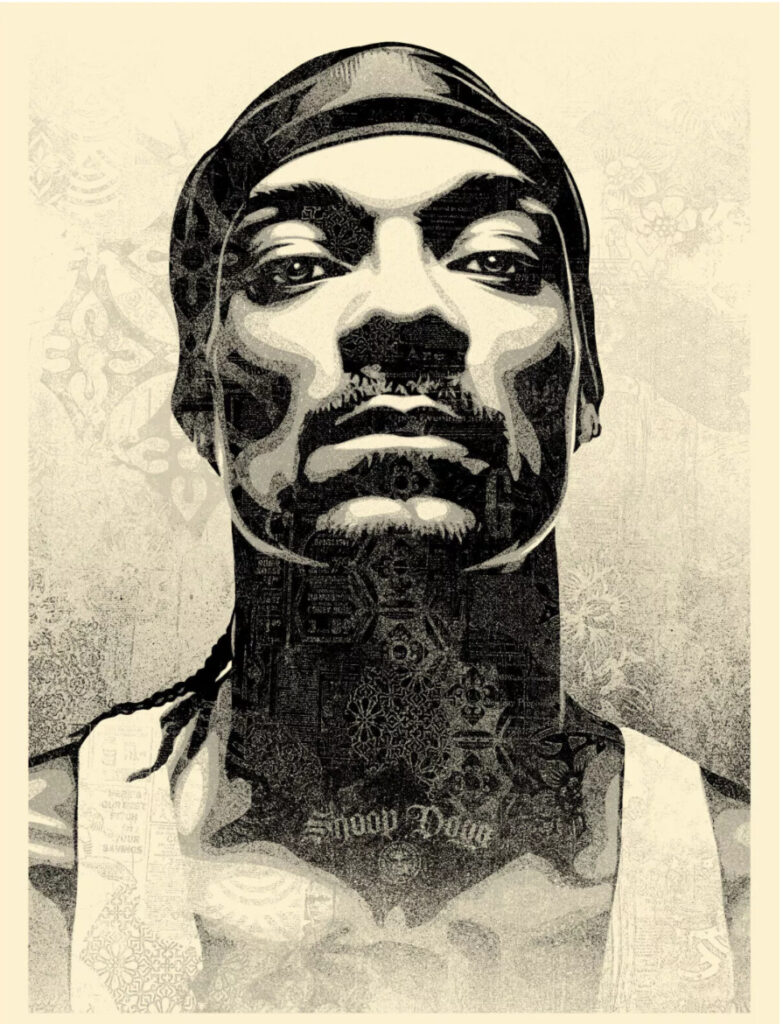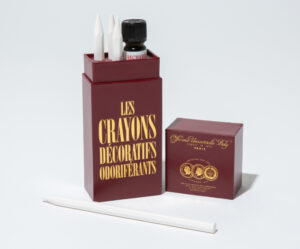
In 2020, amidst the reverberating sounds of political disquiet, social upheaval, and a renaissance in protest art, Shepard Fairey, under his OBEY GIANT studio, released a commanding screen print titled “Snoop D-O Double G.” Printed on thick cream Speckletone paper, this portrait of Snoop Dogg transcends the boundaries of traditional celebrity iconography and enters the terrain of cultural monument. More than just a commemorative poster, it is a declaration of legacy, attitude, and narrative ownership.
Fairey’s poster art has always existed at the nexus of resistance and reverence. From his Hope poster of Barack Obama to his visual interventions on climate justice, Fairey understands the screen print not just as medium, but as ideological delivery system. With Snoop D-O Double G, he turned his focus toward a West Coast rap icon whose impact on popular culture extends far beyond music. This flow is not simply an homage to a figure—it is a framing of Black cultural genius through the lens of street art philosophy, punk ethics, and mass production as method of liberation.
The Iconic Format: Portrait as Street Canon
At first glance, the Snoop D-O Double G print mirrors Fairey’s signature format: bold contrast, limited palette, radiant framing, and geometric balance. Snoop is portrayed with poise and gaze—a posture halfway between revolutionary defiance and royal assurance. His visage is grounded in hip-hop realism, yet stylized through the OBEY aesthetic that elevates it to propaganda-level clarity.
The texture of the Speckletone paper adds a tangible warmth—a physicality often lost in digital reproductions. This choice of medium isn’t arbitrary. Fairey is known to favor tactile, raw papers to evoke zine culture and 20th-century protest posters. Here, that graininess situates Snoop in the lineage of revolutionary portraiture—Che Guevara by Jim Fitzpatrick, Huey Newton in wicker throne, or Nina Simone captured mid-glance. Fairey gives Snoop the aura of the venerated, but does so without sterilizing his persona.
In fact, the print immortalizes what makes Snoop singular: his capacity to exist across contradictions. He’s at once Long Beach OG and cooking-show host with Martha Stewart, corporate-friendly, cannabis prophet and national treasure. Fairey captures that multiplicity by flattening it into a symmetrical certainty—Snoop’s mythology made clean, iconic, reproducible.
The Language of Obey: Visual Power, Subversion, and Mass Accessibility
To understand this piece, one must understand Fairey’s visual language. OBEY’s roots lie in détournement—the Situationist strategy of hijacking media symbols to reveal the mechanisms of power. In Fairey’s work, repetition becomes a subversive tool. Like Warhol’s silk screens of Elvis and Monroe, Fairey’s posters broadcast familiarity as a weapon, re-inscribing public consciousness through mass visibility.
But unlike Warhol’s cool detachment, Fairey’s images burn with intentional politics. They reclaim the spaces where corporate advertisement dominates and replant them with resistance. In Snoop D-O Double G, we see this ethos transposed onto a figure who himself has navigated commodification. Snoop is a brand, yes, but one that has consistently returned to the voice of the streets.
In this light, Fairey’s rendering doesn’t flatten Snoop’s complexities; it honors them. The print becomes not just a poster, but a mirror of influence—a democratized artifact capable of hanging in a gallery, a dorm room, a record store, or a protest march. That’s the genius of the Obey approach: it disperses power through replication, offering aesthetic agency to all who possess it.
Cultural Resonance in 2020: Why This Print Mattered Then—and Now
Released in a year of radical instability, the Snoop D-O Double G screen print arrived as a balm and a banner. 2020 was defined by pandemics—of disease, yes, but also of disinformation, systemic injustice, and isolation. In that void, pop culture icons became more than entertainers; they became repositories of collective identity. Snoop Dogg, with his trans-generational appeal and unabashed authenticity, offered comfort and continuity.
Fairey’s print, therefore, is not nostalgia—it’s affirmation. In a climate that demanded reassessment of American values and cultural inheritance, Fairey chose to immortalize a Black artist whose career has spanned decades of sonic rebellion and cultural defiance. Snoop’s legacy is carved not only in platinum records but in his enduring relevance. Fairey, always attuned to symbols with staying power, recognized that.
The timing was equally critical. The global Black Lives Matter protests of 2020 brought renewed scrutiny to the ways in which Black icons are celebrated or sanitized. Fairey’s portrait doesn’t pander. It resists the urge to soften. Snoop isn’t smirking. He’s confronting. He is, as the title spells out, D-O Double G—unfiltered, unbothered, unmovable.
The Politics of Print: Who Gets Immortalized?
In the canon of visual art, who gets framed matters. For centuries, Western portraiture served only the powerful—the monarch, the pope, the tycoon. Fairey, who has long disrupted this hierarchy, uses Snoop D-O Double G to further the decolonization of the portrait genre.
This print argues, visually and materially, that Black excellence deserves reproduction and reverence, not just recognition. It speaks to a shift in contemporary visual culture where muralists, graphic designers, and street artists are now leading voices in historical documentation. Fairey doesn’t ask for permission to deify Snoop; he declares it.
And in doing so, he aligns with artists like Kehinde Wiley, Nina Chanel Abney, and Hank Willis Thomas—figures who refuse to let traditional institutions gatekeep representation. While Fairey is white, his work often aligns with anti-racist messaging and he uses his platform to amplify voices and icons rooted in cultural resistance. This print continues that lineage.
From Street Posters to Wall Art: The Commercial Critique
Critics might argue that mass-produced posters, even those by Fairey, risk the commodification of rebellion. After all, when you hang a portrait of Snoop by Obey in your home, are you supporting the culture or simply consuming it? But Fairey’s practice has always leaned into that tension. He doesn’t run from commercial circuits; he infects them.
His prints are priced accessibly compared to blue-chip gallery art, and are often sold with the express intent to raise money for political causes. That tension between art and commerce is where Fairey thrives. He democratizes prestige—not by cheapening the subject, but by multiplying access to the image.
In a digital age where Instagram likes determine cultural capital, physical posters like Snoop D-O Double G reclaim space. They demand wall presence. They are not endlessly scrollable—they root themselves in your room, your routine, your peripheral vision. And over time, they become totems—reminders of the politics, people, and periods they encapsulate.
Impression
Fairey’s Snoop D-O Double G screen print is more than a idealogue of streetwear style and hip-hop homage. It is a visual editorial—an essay in ink and paper—that declares the worth of a man, a movement, and a cultural lineage. Through controlled lines and strategic color, Fairey renders Snoop not as an entertainer, but as a figure of historic gravity.
This isn’t Snoop in motion, or Snoop in performance. It’s Snoop in stillness—elevated, immortalized, and untouchable. A stillness that speaks louder than any anthem. A stillness that says: I’ve seen it all. I’m still here. And I’m still the Doggfather.
The cream Speckletone paper may yellow with age. The ink may fade. But what endures is the idea—that portraiture can be protest, that design can be democratized, and that the intersection of hip-hop and high art is not anomaly, but continuum.
No comments yet.








